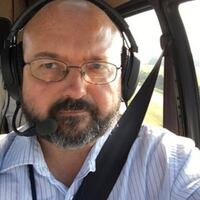This spacecraft is named “Orion,” and it is hoped that people will climb aboard for future missions to the lunar surface.
Technology provided by Mason’s L3Harris has been instrumental to the effort.
The Mason company provided the booster, core and upper stage avionics, or aviation electronics, for Artemis I.
That means that during the first eight minutes of flight, more than 30 L3Harris space launch avionics systems enable command and control, trajectory and solid rocket booster jettison for the SLS (or Space Launch System), said Penny Bena, segment creative lead for L3Harris.
“Our technology are the avionics units that help power the vehicle. It controls that big, powerful machine,” L3Harris Chief Technologist Mark Dapore said in an interview with this news outlet in August, after a previous Artemis launch attempt had been scrubbed.
“We were all extremely happy with the way the launch occurred last night,” Bena said Wednesday morning.
“For decades NASA relied on L3Harris’ expertise and technology — from early spacecraft through the Mercury, Gemini, Apollo, Space Shuttle, International Space Station and Mars missions,” Kristin Houston, president of electro optical for L3Harris, said in a release.“Today’s successful launch will provide valuable data enabling us to refine our technologies in support of future SLS missions.”
This is the maiden flight for the SLS vehicle, and as such it was the maiden flight for all the avionics units L3Harris designed for that vehicle, Dapore said Wednesday.
“I think this is the largest number of new, never-before-flown units we have ever had on a single mission,” Dapore said.
About 100 Mason employees were involved in designing, testing and fabricating the 33 different avionics units on the NASA vehicle.
The Artemis timeline is in flux, as always. Artemis II should be the first mission with astronauts aboard, but that won’t happen until 2024 at the earliest. The goal for that trip is to go around the Moon, not to land on it.
Humans have not been on the moon since 1972, the final U.S. Apollo mission. Artemis III, hoped to feature the new Moon landing, is scheduled for no earlier than 2025.
Bena said she expects L3Harris to continue to work with NASA.
L3Harris is adding new capability for the Artemis II and III missions, with a new safety unit which will trigger ejection of the capsule with the astronauts should the launch vehicle fail, Dapore said. “This safety system will prevent the a Shuttle Challenger-type failure from harming the astronauts.”
About the Author
